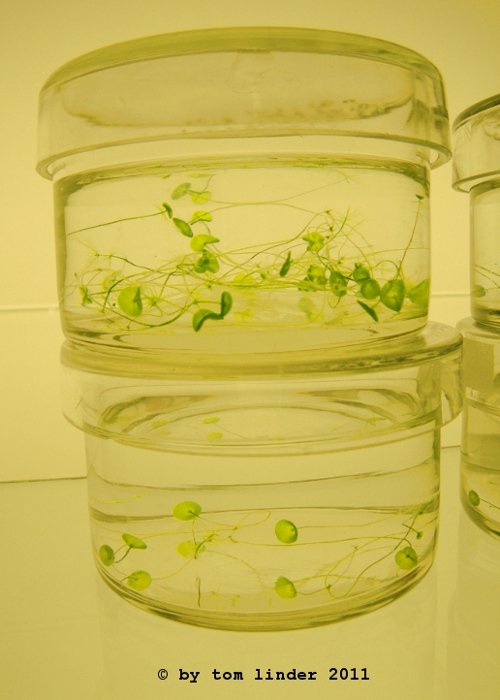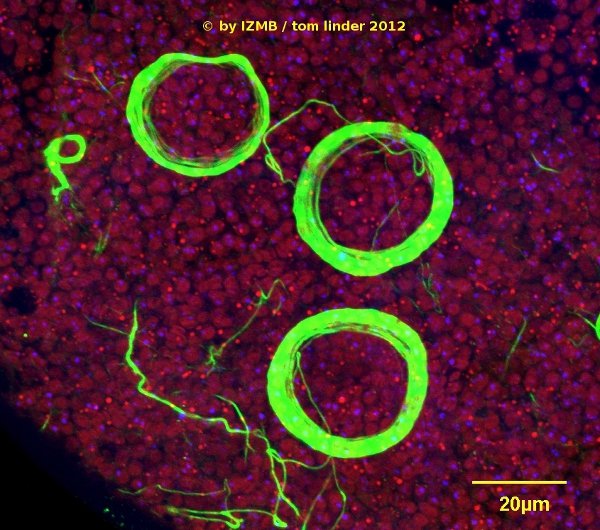Bachelor thesis:
- Immunocytochemistry of the cytoskeleton of Acetabularia -
In Dec. 2011 I've finished my bachelor thesis in the Menzel lab at the Institute of Cellular and Molecular Botany (IZMB) at the University Bonn.
The project study and the thesis work were based on a preceding study of Prof. Menzel and co-workers (Menzel et al. 1995) and focused on pharmaceutical treatments
of the actin cytoskeleton of the unicellular, multinucleate green alga Acetabularia (Acetabularia peniculus, also known as Polyphysa peniculus or the former name Acetabularia cliftonii).
The actin cytoskeleton was stained by immunocytochemistry and subsequently visualized by epifluorescence microscopy and confocal laser scanning microscopy.
The pharmaceutical agents employed in the studies acted directly or indirectly on the myosin motorproteins and it could be shown that,
depending on the used agent, an (hyper)activation (okadaic acid) or inhibition (BDM, NEM) of myosin molecules occurred,
which in turn led to peculiar distortions of the actin cytoskeleton within the cells of Acetabularia cysts
(this special cell type is formed as an enduring stage in the life cycle of the alga and from these cysts gametes are formed).
Hopefully, I don't have to witness that the results of this study will serve to jumpstart another, politically and/or commercially pre-selected doctoral carreer,
thus parasitizing on my year-long and thousands of work hours long efforts, which were denied of any further support....
Copies of the project study and the bachelor thesis will be available at personal request under the e-mail address posted on the Legal Notice & Disclaimer page.

Culture dishes of Acetabularia mediterranea

Cyst forming stage of the cap of Acetabularia peniculus, Leica MZFL III Binocular

Actin ring formation in the cytoplasm of a cyst of Acetabularia peniculus treated with 0.5 μM okadaic acid for 8 h, Olympus Fluoview CLSM, 40x